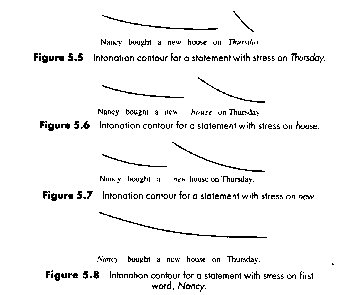
Consider the difference between:
English has a number of intonation patterns which add conventionalized meanings to the utterance: question, statement, surprise, disbelief, sarcasm, teasing.
An important feature of English intonation is the use of an
intonational accent (and extra stress) to mark the focus
of a sentence. Normally this focus accent goes on the last major
word of the sentence, but it can come earlier in order to
emphasize one of the earlier words or to contrast it with
something else.

Cross-linguistic differences
People have a tendency to think of intonation as being directly
linked to the speaker's emotions. In fact, the meaning of
intonation contours is as conventionalized as any other aspect of
language. Different languages can use different conventions,
giving rise to the potential for cross-cultural misunderstandings.
Two examples of cross-linguistic differences in intonation
patterns:
Contrastive emphasis
Many languages mark contrastive emphasis like English, using an
intonational accent and additional stress.
Many other languages use only syntactic devices for contrastive emphasis, for example, moving the emphasized phrase to the beginning of the sentence.
These patterns too can be different across languages. Even small differences can be important:
reading the one language with the intonation pattern appropriate to the other can give rise to entirely unintentional effects: English with Russian intonation sounds unfriendly, rude or threatening, to the native speaker of English; Russian with an English intonation sounds affected or hypocritical to the native speaker of Russian.
Comrie (1984); "Interrogativity in Russian"